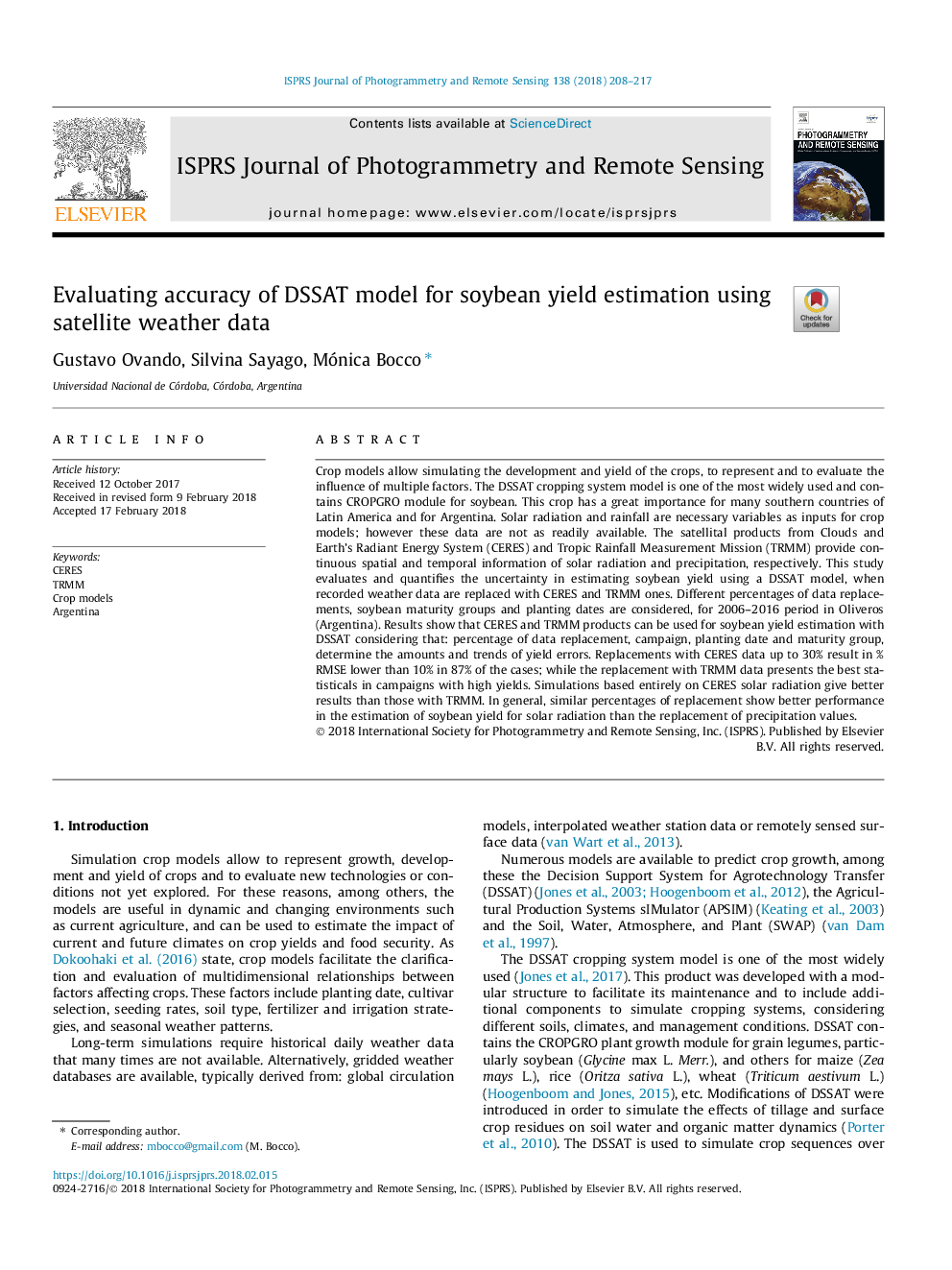| Article ID | Journal | Published Year | Pages | File Type |
|---|---|---|---|---|
| 6949211 | ISPRS Journal of Photogrammetry and Remote Sensing | 2018 | 10 Pages |
Abstract
Crop models allow simulating the development and yield of the crops, to represent and to evaluate the influence of multiple factors. The DSSAT cropping system model is one of the most widely used and contains CROPGRO module for soybean. This crop has a great importance for many southern countries of Latin America and for Argentina. Solar radiation and rainfall are necessary variables as inputs for crop models; however these data are not as readily available. The satellital products from Clouds and Earth's Radiant Energy System (CERES) and Tropic Rainfall Measurement Mission (TRMM) provide continuous spatial and temporal information of solar radiation and precipitation, respectively. This study evaluates and quantifies the uncertainty in estimating soybean yield using a DSSAT model, when recorded weather data are replaced with CERES and TRMM ones. Different percentages of data replacements, soybean maturity groups and planting dates are considered, for 2006-2016 period in Oliveros (Argentina). Results show that CERES and TRMM products can be used for soybean yield estimation with DSSAT considering that: percentage of data replacement, campaign, planting date and maturity group, determine the amounts and trends of yield errors. Replacements with CERES data up to 30% result in %RMSE lower than 10% in 87% of the cases; while the replacement with TRMM data presents the best statisticals in campaigns with high yields. Simulations based entirely on CERES solar radiation give better results than those with TRMM. In general, similar percentages of replacement show better performance in the estimation of soybean yield for solar radiation than the replacement of precipitation values.
Keywords
Related Topics
Physical Sciences and Engineering
Computer Science
Information Systems
Authors
Gustavo Ovando, Silvina Sayago, Mónica Bocco,
